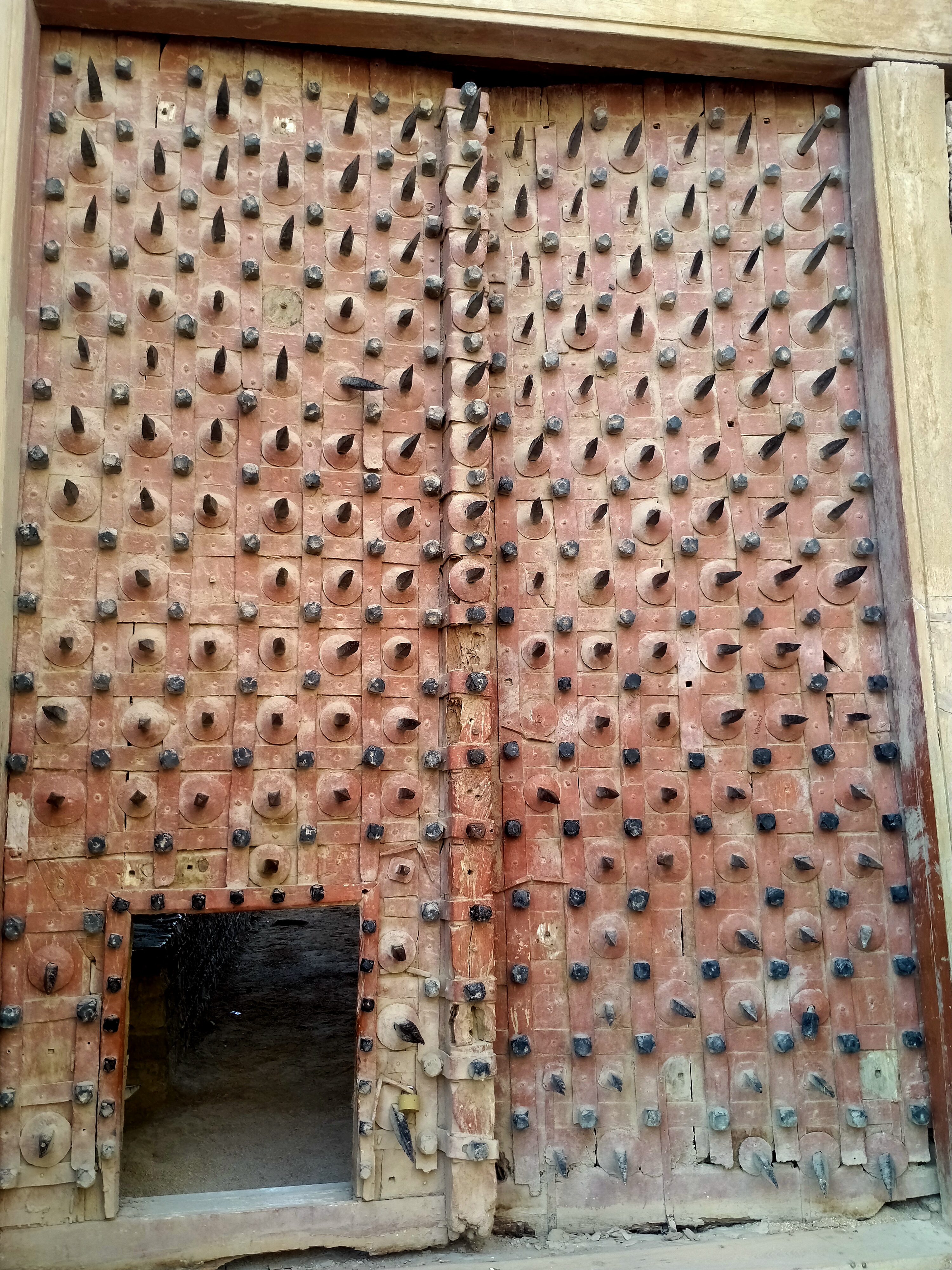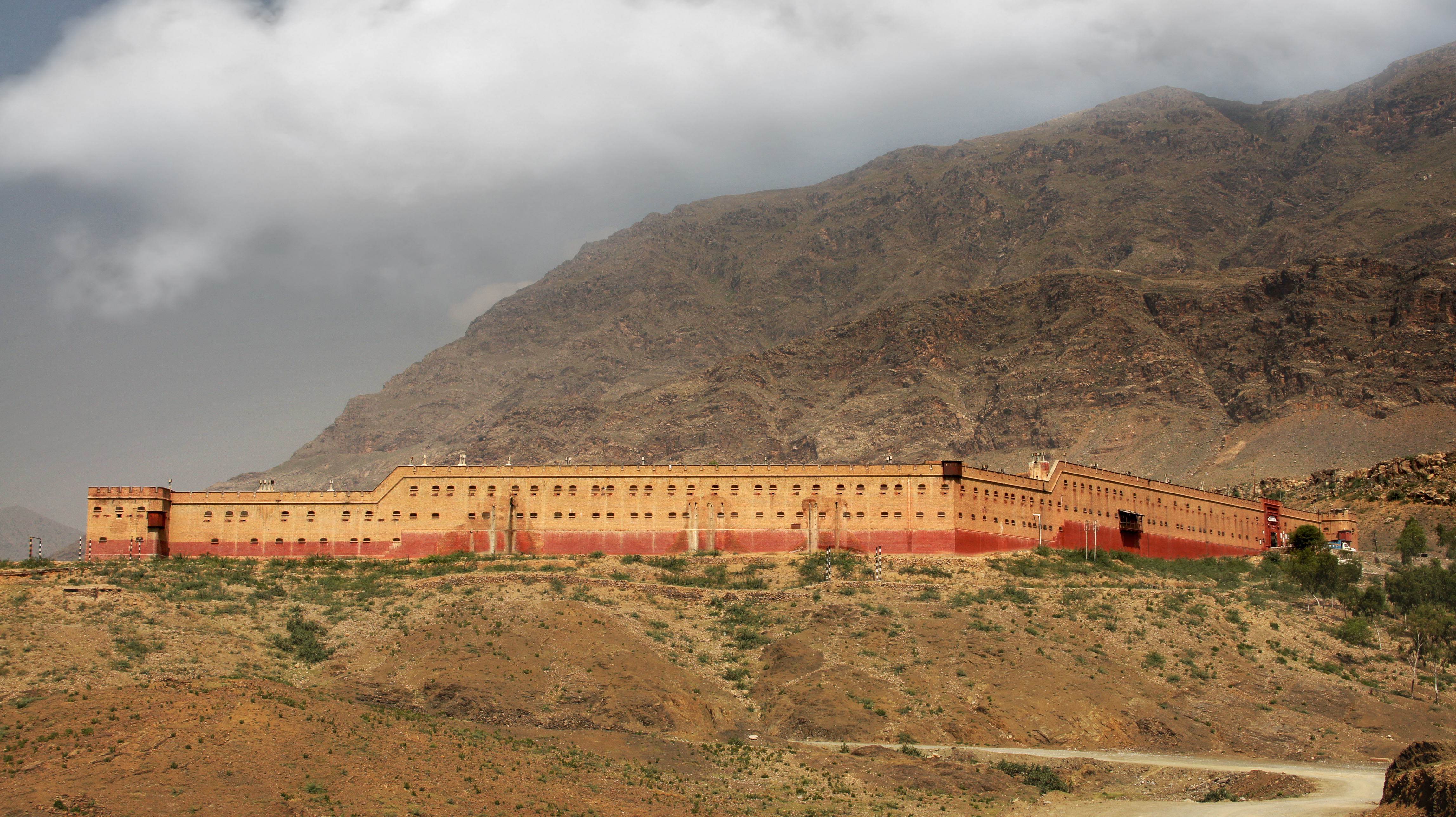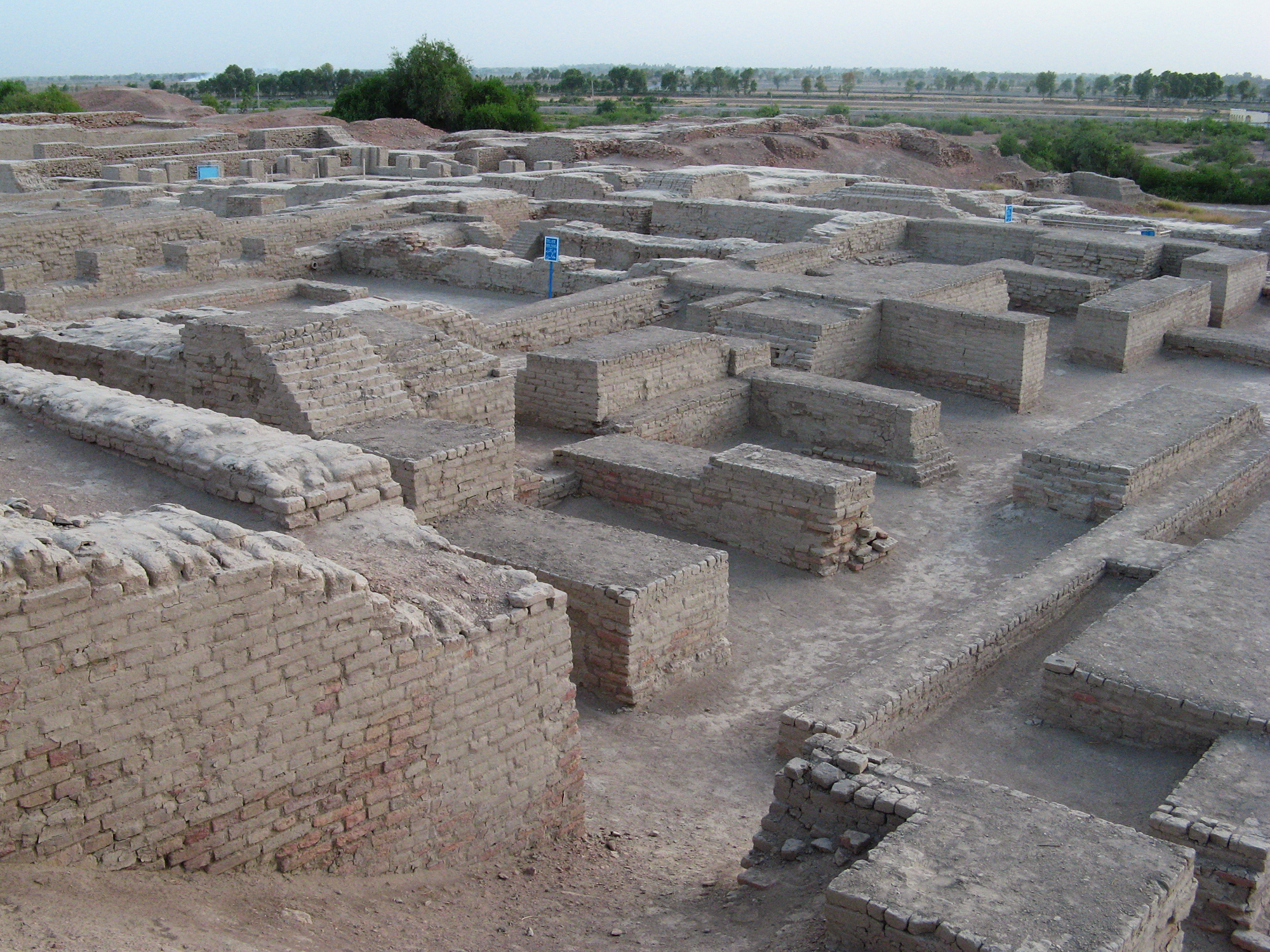|
Kot Diji Fort
The Kot Diji Fort (; ;''Fort of the Daughter''), formally known as Fort Ahmadabad, is an 18th-century Talpur-era fort located in the town of Kot Diji in Khairpur District, Pakistan, about 25 miles east of the Indus River at the edge of the Thar Desert. The fort sits above a pre-Harappan Civilization archaeological site dating to 2500 to 2800 B.C.E. Background The Kot Diji Fort was built by Mir Sohrab Khan Talpur, between 1785 and 1795. The site sits on a hill at the southern end of the Rohri Hills, and sits above a prehistoric mound of the same name, where remains of a pre-Harappan civilization have been found. Structure The fort sits atop a 110 foot tall high hill that rises above the city of Kot Diji. The fort's 30 foot tall walls encircle the uppermost portion of the fort, resulting a narrow-width fortress with perimeter of 1.8 kilometres. The fort contains three strategically placed towers that are each 50 feet tall. The fort contains several sites for cannon placement, and c ... [...More Info...] [...Related Items...] OR: [Wikipedia] [Google] [Baidu] |
Kot Diji
The ancient site at Kot Diji ( sd, ڪوٽ ڏیجي; ur, کوٹ ڈیجی) was the forerunner of the Indus Civilization. The occupation of this site is attested already at 3300 BCE. The remains consist of two parts; the citadel area on high ground (about )), and outer area. The Pakistan Department of Archaeology excavated at Kot Diji in 1955 and 1957. Located about ) south of Khairpur in the province of Sindh, Pakistan, it is on the east bank of the Indus opposite Mohenjo-daro. The site is situated at the foot of the Rohri Hills where a fort (Kot Diji Fort) was built around 1790 by the Talpur dynasty ruler of Upper Sindh, Mir Suhrab, who reigned from 1783 to 1830 AD. This fort built on the ridge of a steep narrow hill is well-preserved. Cultural context The earliest site of this culture is Kunal (4000 BCE) in Haryana which is older than Rehman Dheri (3300 BCE). The ''type site'', the first excavated site of this type of culture is Kot Diji. Rehman Dheri, which was consid ... [...More Info...] [...Related Items...] OR: [Wikipedia] [Google] [Baidu] |
Harappan Civilization
Harappa (; Urdu/ pnb, ) is an archaeological site in Punjab, Pakistan, about west of Sahiwal. The Bronze Age Harappan civilisation, now more often called the Indus Valley Civilisation, is named after the site, which takes its name from a modern village near the former course of the Ravi River, which now runs to the north. The core of the Harappan civilization extended over a large area, from Gujarat in the south, across Sindh and Rajasthan and extending into Punjab and Haryana. Numerous sites have been found outside the core area, including some as far east as Uttar Pradesh and as far west as Sutkagen-dor on the Makran coast of Baluchistan, not far from Iran. The site of the ancient city contains the ruins of a Bronze Age fortified city, which was part of the Harappan civilisation centred in Sindh and the Punjab, and then the Cemetery H culture. The city is believed to have had as many as 23,500 residents and occupied about with clay brick houses at its greatest extent dur ... [...More Info...] [...Related Items...] OR: [Wikipedia] [Google] [Baidu] |
Tourist Attractions In Sindh
Tourism is travel for pleasure or business; also the theory and practice of touring, the business of attracting, accommodating, and entertaining tourists, and the business of operating tours. The World Tourism Organization defines tourism more generally, in terms which go "beyond the common perception of tourism as being limited to holiday activity only", as people "travelling to and staying in places outside their usual environment for not more than one consecutive year for leisure and not less than 24 hours, business and other purposes". Tourism can be domestic (within the traveller's own country) or international, and international tourism has both incoming and outgoing implications on a country's balance of payments. Tourism numbers declined as a result of a strong economic slowdown (the late-2000s recession) between the second half of 2008 and the end of 2009, and in consequence of the outbreak of the 2009 H1N1 influenza virus, but slowly recovered until the COVID-19 pa ... [...More Info...] [...Related Items...] OR: [Wikipedia] [Google] [Baidu] |
Forts In Sindh
A fortification is a military construction or building designed for the defense of territories in warfare, and is also used to establish rule in a region during peacetime. The term is derived from Latin ''fortis'' ("strong") and ''facere'' ("to make"). From very early history to modern times, defensive walls have often been necessary for cities to survive in an ever-changing world of invasion and conquest. Some settlements in the Indus Valley civilization were the first small cities to be fortified. In ancient Greece, large stone walls had been built in Mycenaean Greece, such as the ancient site of Mycenae (famous for the huge stone blocks of its 'cyclopean' walls). A Greek '' phrourion'' was a fortified collection of buildings used as a military garrison, and is the equivalent of the Roman castellum or English fortress. These constructions mainly served the purpose of a watch tower, to guard certain roads, passes, and borders. Though smaller than a real fortress, they ... [...More Info...] [...Related Items...] OR: [Wikipedia] [Google] [Baidu] |
List Of Museums In Pakistan
This is a list of museums, galleries, and related building structures in Pakistan. Museums and galleries Archaeological and historical museums * Harappa Museum, Harappa * Bahawalpur Museum, Bahawalpur * Bannu Museum, Bannu * Chitral Museum * City Museum, Gorkhatri, Peshawar * Dir Museum, Chakdara * Hund Museum, Swabi * Kasur Museum, Kasur * Kalasha Dur Museum, Chitral * Lahore Museum, Lahore ... [...More Info...] [...Related Items...] OR: [Wikipedia] [Google] [Baidu] |
List Of Forts In Pakistan
The following is a partial list of forts and castles in Pakistan: See also * Tourism in Pakistan * List of UNESCO World Heritage Sites in Pakistan * List of museums in Pakistan * Lahore Fort * Rohtas Fort * Noor Mahal * Derawar Fort References External links Forts of Pakistan by Shaikh Muhammad Ali {{Castles in Pakistan Castles in Pakistan, * Forts in Pakistan, * Lists of forts, Pakistan Pakistan military-related lists, Forts Lists of tourist attractions in Pakistan, Forts ... [...More Info...] [...Related Items...] OR: [Wikipedia] [Google] [Baidu] |
List Of UNESCO World Heritage Sites In Pakistan
The United Nations Educational, Scientific and Cultural Organization (UNESCO) World Heritage Sites are places of importance to cultural or natural heritage as described in the UNESCO World Heritage Convention, established in 1972. Cultural heritage consists of monuments (such as architectural works, monumental sculptures, or inscriptions), groups of buildings, and sites (including archaeological sites). Natural features (consisting of physical and biological formations), geological and physiographical formations (including habitats of threatened species of animals and plants), and natural sites which are important from the point of view of science, conservation or natural beauty, are defined as natural heritage. Pakistan accepted the convention on 23 July 1976, making its sites eligible for inclusion on the list. , there are six World Heritage Sites in Pakistan, and a further 26 on the tentative list. The first three sites were listed in 1980, the Archaeological Ruins at Moenjodar ... [...More Info...] [...Related Items...] OR: [Wikipedia] [Google] [Baidu] |
Government Of Pakistan
The Government of Pakistan ( ur, , translit=hakúmat-e pákistán) abbreviated as GoP, is a federal government established by the Constitution of Pakistan as a constituted governing authority of the Administrative units of Pakistan, four provinces, two autonomous territories, and one federal territory of a Parliamentary democracy, parliamentary democratic Parliamentary republic, republic, constitutionally called the Pakistan, Islamic Republic of Pakistan. Effecting the Westminster system for governing the state, the government is mainly composed of the Executive branch, executive, Legislative branch, legislative, and Judicial branch, judicial branches, in which all powers are vested by the Constitution of Pakistan, Constitution in the Parliament of Pakistan, Parliament, the Prime Minister of Pakistan, Prime Minister and the Supreme Court of Pakistan, Supreme Court. The powers and duties of these branches are further defined by acts and amendments of the Parliament, including the ... [...More Info...] [...Related Items...] OR: [Wikipedia] [Google] [Baidu] |
Kot Diji Fort Gate
Kot is the surname of a Polish szlachta (nobility) family. The surname derives from the nickname with the literal meaning "cat".Kazimierz Rymut, Nazwiska Polaków. Słownik historyczno-etymologiczny, Wydawnictwo Naukowe DWN, Kraków 2001 The first mention of the name was in the 13th century. describes the surname in his ''Herbarz polski'' as belonging to Piława coat of arms. The Kot family uses the Doliwa, Pilawa, Rola, or Kot Morski coat of arms.Tadeusz Gajl, ''Herbarz Polski od średniowiecza do XX wieku'', Gdańsk 2007, p. 457. Notable persons with Kot surname *Andrzej Kot (1946–2015), Polish designer *Antoni Kot, Polish footballer *Eric Kot (born 1966), Hong Kong singer and actor *Igor Kot (born 1980), Russian footballer *Jakub Kot (born 1990), Polish ski jumper *Karol Kot (1946–1968), Polish serial killer *Maciej Kot (born 1991), Polish ski jumper *Myroslava Kot (1933–2014), Ukrainian embroider *Natalia Kot (born 1938), Polish artistic gymnast *Serhiy Kot (1958– ... [...More Info...] [...Related Items...] OR: [Wikipedia] [Google] [Baidu] |
Talpur Dynasty
The Talpur dynasty ( sd, ٽالپردور) were rulers based in Sindh. Four branches of the dynasty were established following the defeat of the Kalhora dynasty at the Battle of Halani in 1783: one ruled lower Sindh from the city of Hyderabad, Sindh, Hyderabad, another ruled over upper Sindh from the city of Khairpur, a third ruled around the eastern city of Mirpur Khas, and a fourth was based in Tando Muhammad Khan. The Talpurs were ethnically Baloch people, Baloch. For most of their rule, they were subordinate to the Durrani Empire and were forced to pay tribute to them. They ruled from 1783, until 1843, when they were in turn defeated by the British Raj, British at the Battle of Miani and Battle of Dubba, Battle of Dubbo. The northern Khairpur branch of the Talpur dynasty, however, continued to maintain a degree of sovereignty during British rule as the Khairpur (princely state), princely state of Khairpur, whose ruler elected to join the new Dominion of Pakistan in October 1 ... [...More Info...] [...Related Items...] OR: [Wikipedia] [Google] [Baidu] |
Sindh
Sindh (; ; ur, , ; historically romanized as Sind) is one of the four provinces of Pakistan. Located in the southeastern region of the country, Sindh is the third-largest province of Pakistan by land area and the second-largest province by population after Punjab. It shares land borders with the Pakistani provinces of Balochistan to the west and north-west and Punjab to the north. It shares International border with the Indian states of Gujarat and Rajasthan to the east; it is also bounded by the Arabian Sea to the south. Sindh's landscape consists mostly of alluvial plains flanking the Indus River, the Thar Desert in the eastern portion of the province along the international border with India, and the Kirthar Mountains in the western portion of the province. The economy of Sindh is the second-largest in Pakistan after the province of Punjab; its provincial capital of Karachi is the most populous city in the country as well as its main financial hub. Sindh is home ... [...More Info...] [...Related Items...] OR: [Wikipedia] [Google] [Baidu] |
Before Common Era
Common Era (CE) and Before the Common Era (BCE) are year notations for the Gregorian calendar (and its predecessor, the Julian calendar), the world's most widely used calendar era. Common Era and Before the Common Era are alternatives to the original Anno Domini (AD) and Before Christ (BC) notations used for the same calendar era. The two notation systems are numerically equivalent: " CE" and "AD " each describe the current year; "400 BCE" and "400 BC" are the same year. The expression traces back to 1615, when it first appeared in a book by Johannes Kepler as the la, annus aerae nostrae vulgaris (), and to 1635 in English as " Vulgar Era". The term "Common Era" can be found in English as early as 1708, and became more widely used in the mid-19th century by Jewish religious scholars. Since the later 20th century, BCE and CE have become popular in academic and scientific publications because BCE and CE are religiously neutral terms. They are used by others who wish to be sensiti ... [...More Info...] [...Related Items...] OR: [Wikipedia] [Google] [Baidu] |









